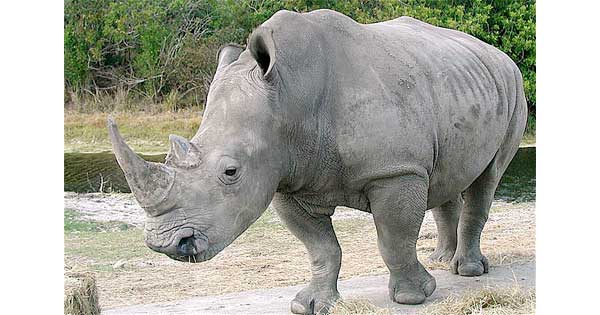
Now let us speak of rhinoceros feet. Or rather, the diseases that affect rhinoceros feet, and the difficulty of diagnosing them. This was not a problem I had ever pondered until I learned of the work of Gabriela Galateanu, a doctor of veterinary medicine who specializes in imaging of wild and domestic animals at the Leibniz Institute for Zoo and Wildlife Research in Berlin.
In an exchange of e-mails, Galateanu tells me that rhino foot afflictions are “tremendously worrying” because a rhino that develops chronic foot disease can’t remain on its feet, and a rhino that can no longer stand up must be euthanized, and it’s not as if the world has an excess of rhinos: over the past 40 years the rhinoceros population has declined by 90 percent, due to habitat loss and illegal trafficking in rhino horn. The crushed horns, which can fetch steep prices, are used in traditional Asian medicines for “curing,” among other ailments, cancer and hangovers.
Of the five species of rhino that still exist, two—the Asian Javan and the Sumatran—are critically endangered, with fewer than 300 individuals left in the wild. In Africa, most black and white rhinos live in protected sanctuaries but are still at great risk of being killed by poachers, and zoos are playing an increasingly important role in protection. (In an act of desperation, the Cincinnati Zoo plans to mate its one and only Sumatran rhino with her younger brother.) Nevertheless, rhinos in zoos often develop foot problems that go undiagnosed because, unlike the more pliable elephant, a rhino is hard to train to undergo an x-ray. Wild animals tend to disguise signs of disease in order to protect themselves from predation, so veterinarians often overlook rhino foot diseases until treatment is too late to save the animals.
Galateanu and her colleagues at three French zoos carried out postmortem CT scanning of limbs removed from three rhinos, two of which had been euthanized because of foot diseases. (CT scanning is not an option for adult living rhinos because the machines’ beds can’t hold them and the openings are too small.) The team discovered a host of bone disorders in the dainty three-toed feet, including fractures, osteoarthritis, degenerative joint disease, and “bone remodeling with loss of normal shape.” The proliferation of pathologies, they speculate, could be caused in part by the conditions that rhinos experience in captivity, including excess weight, inadequate exercise, and protracted standing on hard ground.
True, the rhinos in the study were already dead, so their diagnoses came too late to save them. But the same afflictions can be diagnosed in live, sedated animals using x-rays, Galateanu says. That’s important, because research and diagnosis of chronic foot disease in rhinos “will help us to prevent them from being the last of their kind,” she says. “After a successful evolution of approximately 40 million years, the only five extant species are threatened by extinction and for some of them, the only future might be in captivity.”

